-
Exploding Atom Garden Part 6 High Impact Garden Borders
 Lee Burkhill: Award Winning Designer & BBC 1's Garden Rescue Presenters Official Blog
Lee Burkhill: Award Winning Designer & BBC 1's Garden Rescue Presenters Official Blog

High impact borders can bring the wow factor to your garden. It doesn’t matter whether you have a postage stamp sized garden or a few acres, the principles are the same. Here in the Exploding Atom Garden, I’ve been planting up what I’ve nicknamed the ‘Moody Goth Border’.
The aim for this border is to create drama and interest in direct contrast with the woodland border. This part of the garden links the wild woody outer rim with the red-hot core of the atom. By using a dark and sultry planting palette along with some unusual planting I’m aiming to create a real wow factor.
This will help the transition between the areas of the garden. So come along with me as I show you some intriguing examples you can try at home!
If you have been following the progress of the Exploding Atom Garden, you will have already seen the trees I’ve chosen for height and shrubs. However, it’s not just trees that provide height in a garden. By using herbaceous planting you can help extend the interest in your border by giving your eye more to examine in your garden.
Using height in a border prevents that one level of planting that your eye can quickly skip over. Introduce different heights and you then have a really dynamic and interesting border!

See how I use different heights in this border as it slows down your view?
The Purple border uses a number of tall specimens to bring height to these borders, separating the red-hot inner core, which I’ll be working on next, from the woodland light and airy outer rim.
By using height in your garden borders, you can give the illusion of depth and help blur the boundaries, especially in a small garden. Meaning that you can also make a small garden look bigger!

A top tip is to blend heights from your tallest plants down to the ground cover. Whilst it may sound counter-intuitive, having a few really large specimens can make a garden look bigger and more interesting. This applies even in small gardens. It’s all about scale.
The purple border is really where I’ve gone to town with architectural plants. I’ve used them to draw focus and bring some real drama to this border. It’s where the fragments of the atom have been hurled out into space so I wanted planting that gave the feeling of sharp pieces.

Cardoons are an excellent architectural plant if space allows!
You may have heard the term ‘Architectural planting’ before. Don’t worry if you don’t know what one is.
An architectural plant is any plant that acts as a focal point or structure in a garden.
So if a plant has an unusual form, shape, texture or size in proportion to the garden it can be considered architectural. An architectural plant is one that stands out as a focal point and draws your eye to it.
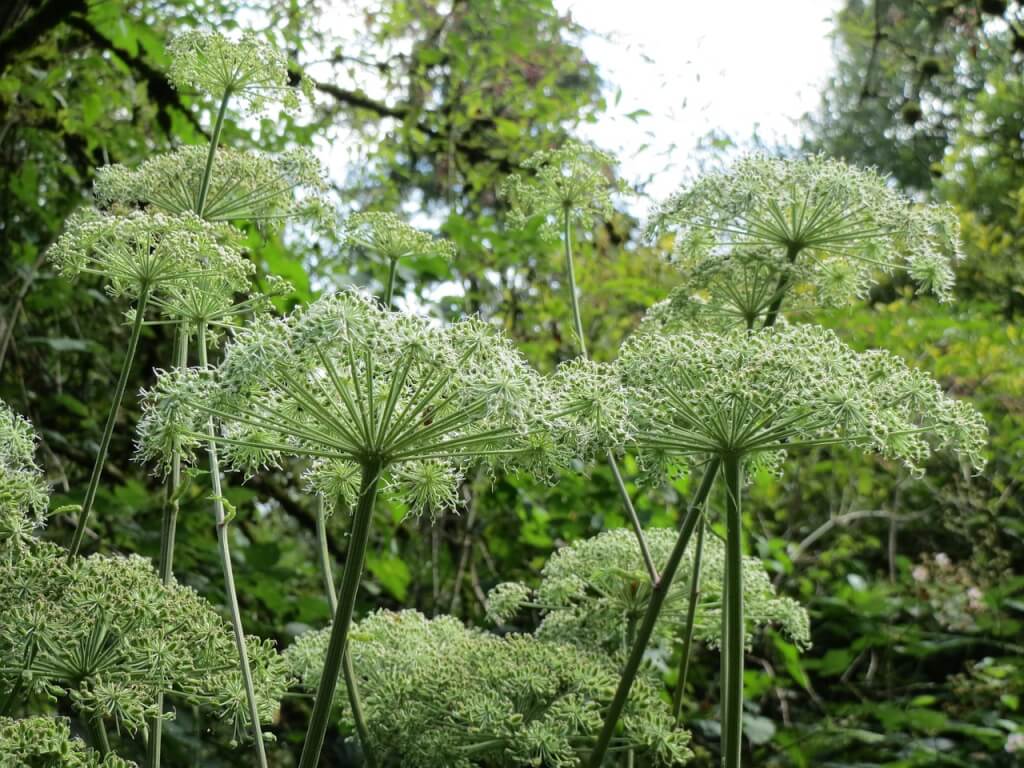
Angelica above towering up in a border is a great architectural plant.
Sometimes even the size of a plant can turn it into an architectural plant, such as a large established Fatsia japonica in a small garden in contrast to say, a tiny 1lt version of the same plant. It must call out to you to go and view it or provide a structure that pulls your focus into a garden.
Now, if I went ahead and simply used all dark and moody colours I’d just end up with a dark void of a border. Even with the most sultry plants, you need a bit of light or contrast to really make those colours jump out.
A top tip for choosing plant colours is to make sure you always have a contrasting colour somewhere in there. It amplifies the colours as it contrasts. A good example of this is to mix yellows with purples, reds with greens etc.
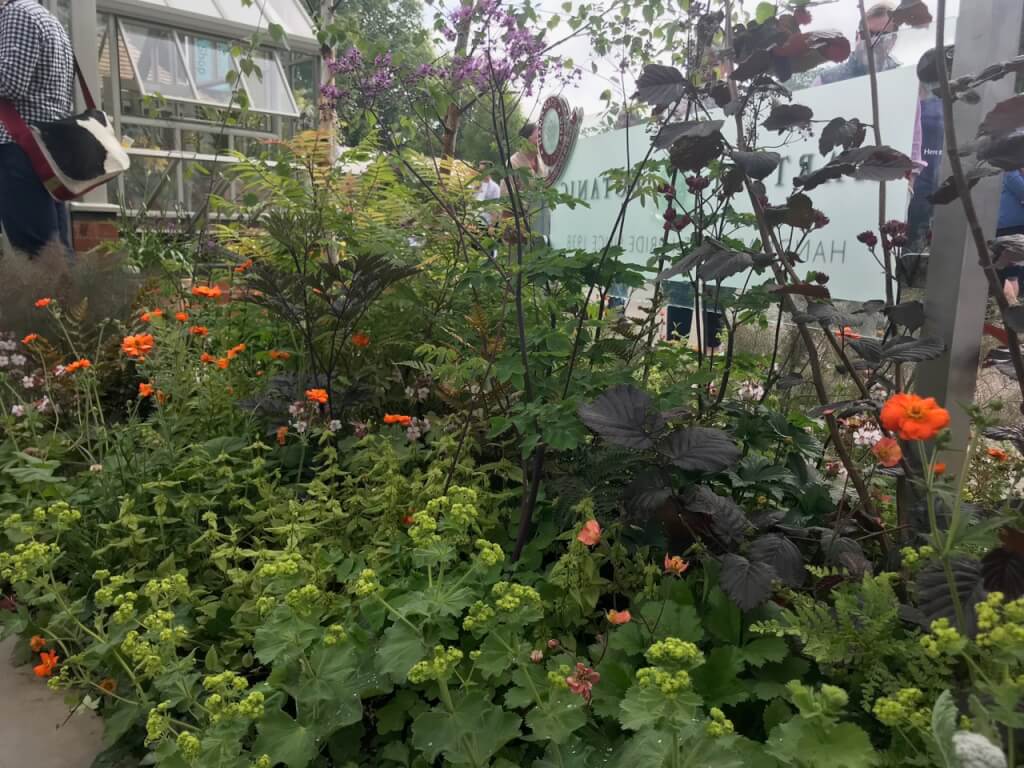
Can you see how the oranges jump out against the purple?
For the exploding atom garden, I’ve predominantly chosen purples and bright blues in the border. However, I’ve also included some silver and white to really make the blues pop out. Without these, it could look flat and uninspired.

A good example of this is where I’ve used the dark purple of Angelica gigas which is in direct contrast with the light white of the Melica altissima alba (which is a airy clump forming grass). It has tiny white flowers which will pop out like popcorn against the Angelica’s dark purple stems.
The moody purple border in the Exploding Atom Garden is meant to be dark and brooding. So I’ve used a mix of common and also rare plants to achieve this look. By using a variety of imposing taller specimens with contrast it should bring a real wow to the border. Here are my Top 5 Purple plants to bring drama to your garden some are common, others are quite unusual.
If you want that real wow then a Cardoon is a must for your garden. Vicious-looking leaves with a silvery shimmer. They bring both beauty and bite!

Cynara cardunculus above.
This is a show garden staple with its flowering season from May until the end of September. It’s one of the most hardworking flowers in the garden. Its bright purple spikes bring a colour pop to any border and it’s also super drought-tolerant.
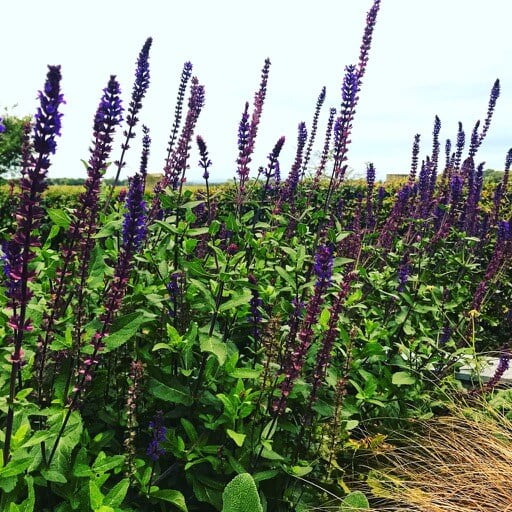
Salvia nemorosa is one of the hardest working garden plants
This light and airy plant is a staple in show gardens. It adds instant height, has delicate purple flowers and is tough as old boots. It’s thin enough to let light through to plants behind it so it really can be positioned anywhere. It takes up such little room but brings so much!

Verbena dancing around the borders above.
Get ready, she’s here! Angelica is such a statement plant in a garden. This variety has Palma violet purple stems and large purple umbel flower heads. The umbel flower head stems from the Parsley family and means you get these almost side plate sized flowers. It’s happy in full sun or even partial shade.

Dried Umbel seed heads of Angelica above.
One of my favourite shade queens. This plant is happiest in damp shade, hidden at the back of a border. However, come September, it sends up these huge white spikes of flowers bursting to life when everything else is coming to an end. If one plant symbolised Goth Rock, it would be this one!
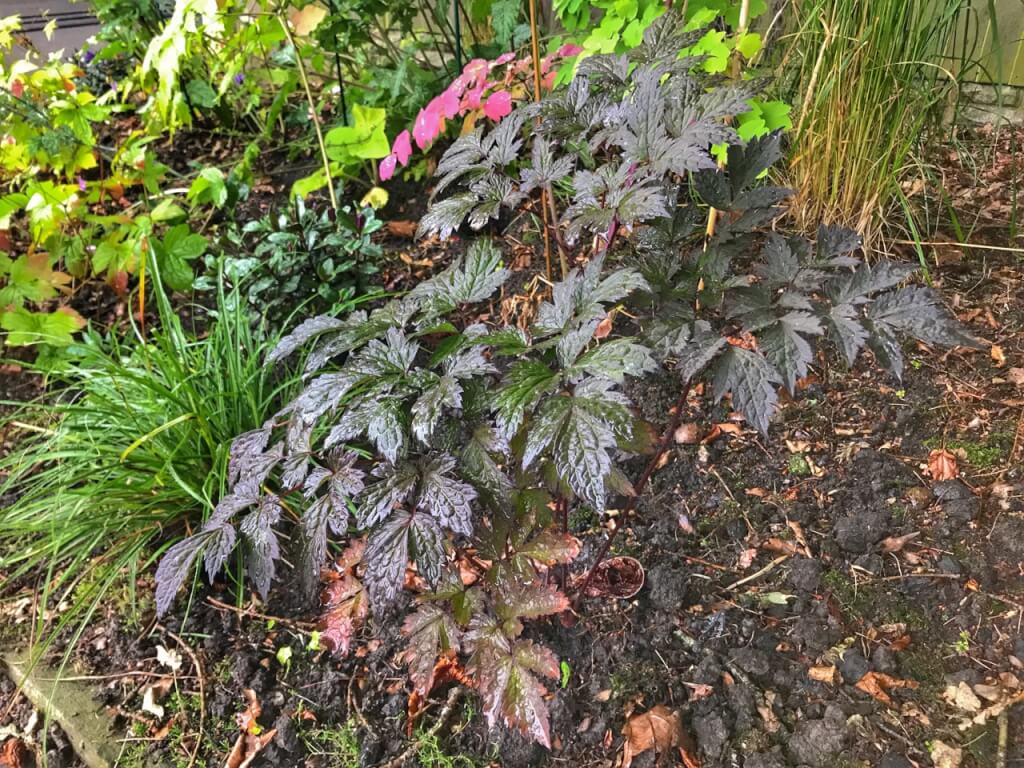
Dark and moody until the Autumn this plant rocks!
Autumn is often overlooked as a time for planting up a garden. When suggested, it is usually met with a ‘why bother’ or ‘I’ll wait until spring’ response. However, you’re really missing a trick by not planting up your garden with herbaceous plants in Autumn.
By planting in the Autumn, you can help ensure that your plants really go with a bang the following spring. This is because planting in spring helps to avoid stress on the plants. As the plants are coming to the end of the growth for that year, they will be able to focus all their energy in establishing roots, rather than putting energy into flower production or leafy growth. The only caution is you need to make sure there is no immediate chance of frost for the first month or so. If you start to plant in September or October, you should be absolutely fine!

So the Exploding Atom Garden is two-thirds of the way complete now. We have the light and airy woodland outer rim now followed by the moody punk rock purple border. So what is next? Well, the Red Hot Inner core will be planted up next. This area features the use of gabions for structure and focus as we enter the centre of the garden. Got a query on the Exploding Atom Garden or garden design in general? Why not Tweet, Facebook or Instagram me! Or you can check out the hashtag #Explodingatomgarden for more.
Catch up by going back to the beginning or other design diaries you may have missed!




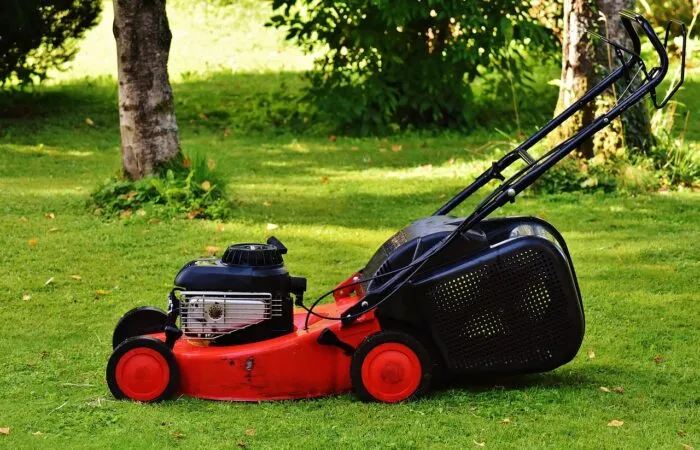

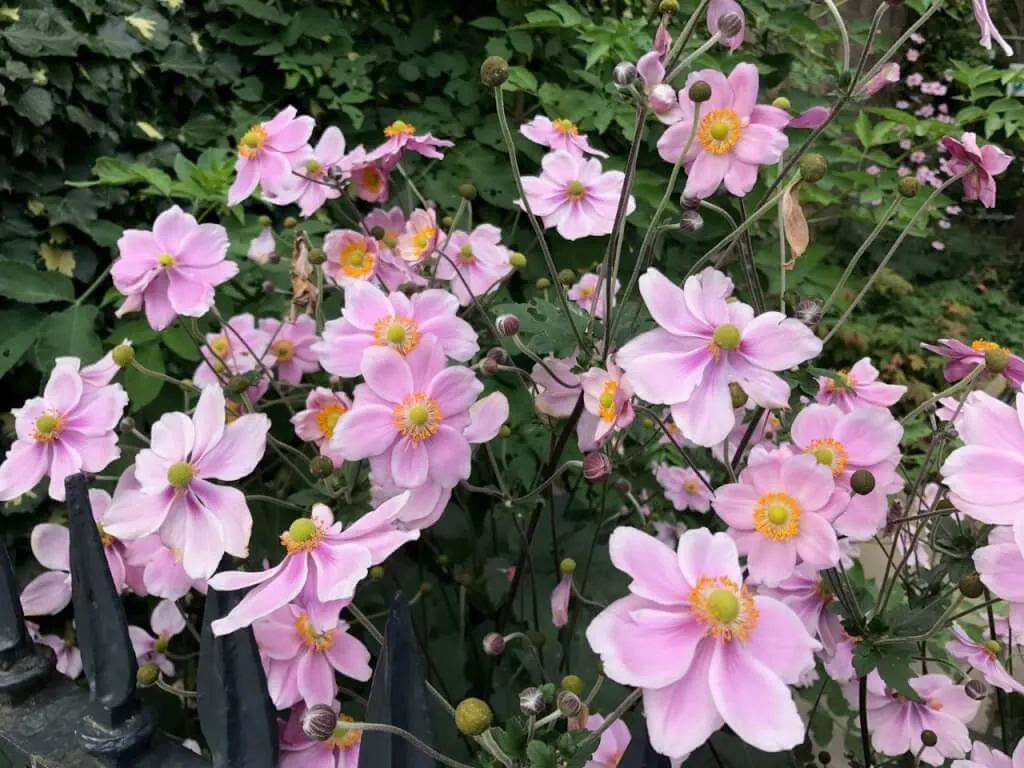


JOIN THE NINJAS

Be the first in line for new Guides, Discount codes and Offers